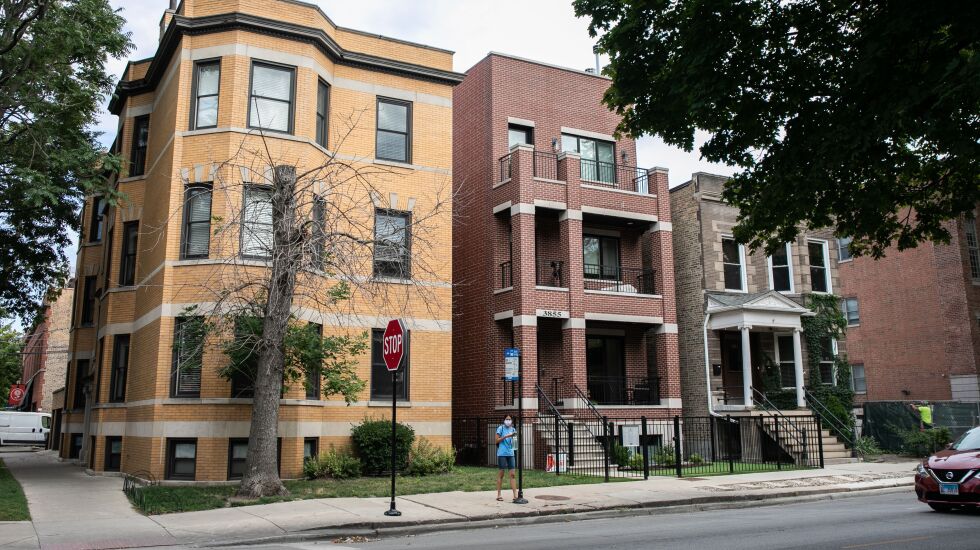
In May 2021, the city launched an experiment in the housing market that carried many hopes. It was a test in prescribed areas to see if the supply of residences could be, to use the description of Housing Commissioner Marisa Novara, “gently” expanded without disturbing neighborhood character.
This involved allowing additional dwelling units, or ADUs, typically basement or attic apartments or coach houses. The program carries many restrictions, but planners wanted to see if adding a unit here and there would introduce lower rents in expensive neighborhoods, help families or small landlords make extra income and encourage multi-generational housing that’s typically rent-free. Some units are called “granny flats.”
The affordability argument assumes that because of the size and location of the units, rented units would command a lower price than the neighborhood standard.
The city’s Housing Department ran the data and found, at this early stage, the program is working in some ways but is challenged in others. It might just be adding expensive units in already expensive neighborhoods.
The department said through late August, it counted 328 ADU applications approved since the program began. Novara said about 65% are for additional units in multi-family buildings, with 35% being for coach houses or freestanding homes built at the rear of a property. She said it’s a sign that most units are going onto blocks that can absorb them; the buildings that get ADUs won’t even look different from the street.

But in a result that shows the gap between haves and have-nots in Chicago, 83% of the approved units are slated to go in zones on the North or Northwest sides. Zones on the South, Southeast and West sides account for the rest. The ADU ordinance has made it easier to add housing in already hot neighborhoods, although there’s no information about rents. In places plagued by crime and disinvestment, little is happening with ADUs.
The five zones cover 21 wards, all with a mix of housing styles. Mayor Lori Lightfoot’s administration, with the City Council’s OK, limited the ADU experiment to those zones.
Novara said she’s not surprised by the neighborhood disparity. By itself, the program can’t do much about longstanding inequity in real estate, she said. Owners with greater disposable incomes are investing in the units while being in a high-rent area creates an incentive to build. “The need is everywhere, but the means are not,” she said.
In other ways, the program shows promise. Novara said nearly half of the approved units are in owner-occupied buildings, especially two- to six-flats. “We’ve got a lot of interest from some alders to expand this citywide,” she said.
Novara would not commit to a timetable for proposing an expansion to the City Council.
Alderpersons approved the experiment in 2020 despite many questions. Would it make a difference in neighborhoods full of empty lots? So far, no. Would it worsen parking where it’s already tight? Too soon to tell. Would people build these just for Airbnb income? The ordinance bans short-term rentals, but policing that is another matter.
So far, the North Side’s 47th Ward of Ald. Matt Martin, covering areas such as North Center, Ravenswood and Lincoln Square, has reported the most ADU projects, with 52 of them approved. Close behind is Ald. Daniel La Spata’s Wicker Park-Logan Square-based 1st Ward, with 50 projects. Supply follows demand.
Steven Vance, proprietor of the Chicago Cityscape real estate information service, said the ADU program is “going well but not necessarily well enough.”
He said it should be expanded citywide, and the rules should be permissive about coach houses. The ordinance limits them to 700 square feet, but other rules about lot coverage mean most will be smaller, he said. Vance said Evanston allows coach houses to be up to 1,000 square feet.

The Housing Department’s numbers cover approved projects. As for what’s getting built, Vance combed city permit records, not an easy task, and found 77 permits issued for 102 units. He said only 18 permits have involved coach houses, which can cost more than $300,000 to build. The city has made grants available for ADU projects, but Vance said more can be done to get the money out.
Coach houses can be a sore point, though. They’re often equated to blight. It’s why they were banned in the city’s zoning code of 1957 when order and appearance were bigger worries than housing equity.
Novara said that was wrong. “We’re simply correcting something that in our minds never should have been made illegal,” she said.
But the farther you go from the lakefront, the more Chicago becomes a city of single-family homes with backyards. Many like it just the way it is. Where ADUs are concerned, alderpersons and community groups should have one rule: Handle with care.







